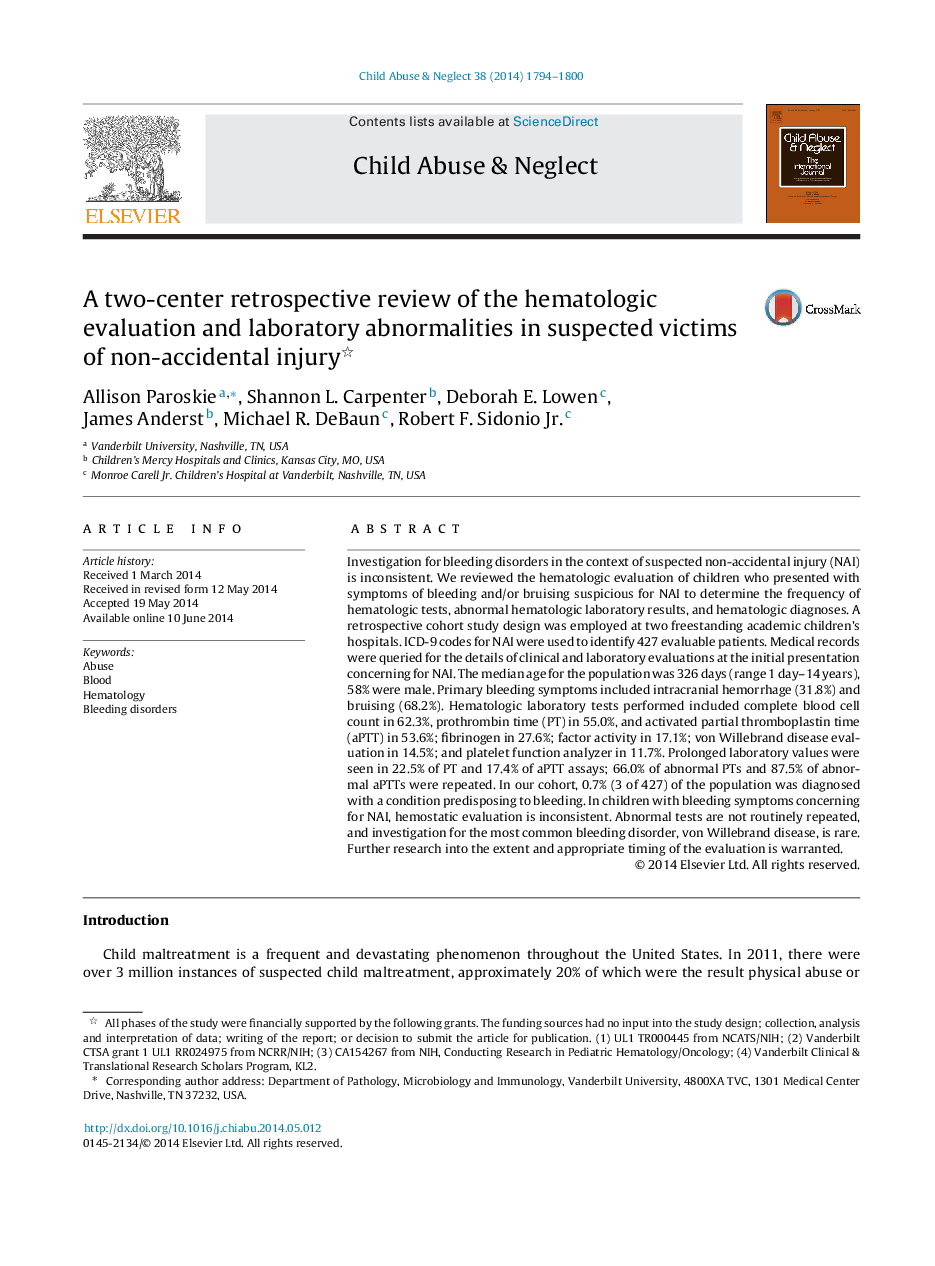| Article ID | Journal | Published Year | Pages | File Type |
|---|---|---|---|---|
| 344733 | Child Abuse & Neglect | 2014 | 7 Pages |
Investigation for bleeding disorders in the context of suspected non-accidental injury (NAI) is inconsistent. We reviewed the hematologic evaluation of children who presented with symptoms of bleeding and/or bruising suspicious for NAI to determine the frequency of hematologic tests, abnormal hematologic laboratory results, and hematologic diagnoses. A retrospective cohort study design was employed at two freestanding academic children's hospitals. ICD-9 codes for NAI were used to identify 427 evaluable patients. Medical records were queried for the details of clinical and laboratory evaluations at the initial presentation concerning for NAI. The median age for the population was 326 days (range 1 day–14 years), 58% were male. Primary bleeding symptoms included intracranial hemorrhage (31.8%) and bruising (68.2%). Hematologic laboratory tests performed included complete blood cell count in 62.3%, prothrombin time (PT) in 55.0%, and activated partial thromboplastin time (aPTT) in 53.6%; fibrinogen in 27.6%; factor activity in 17.1%; von Willebrand disease evaluation in 14.5%; and platelet function analyzer in 11.7%. Prolonged laboratory values were seen in 22.5% of PT and 17.4% of aPTT assays; 66.0% of abnormal PTs and 87.5% of abnormal aPTTs were repeated. In our cohort, 0.7% (3 of 427) of the population was diagnosed with a condition predisposing to bleeding. In children with bleeding symptoms concerning for NAI, hemostatic evaluation is inconsistent. Abnormal tests are not routinely repeated, and investigation for the most common bleeding disorder, von Willebrand disease, is rare. Further research into the extent and appropriate timing of the evaluation is warranted.
